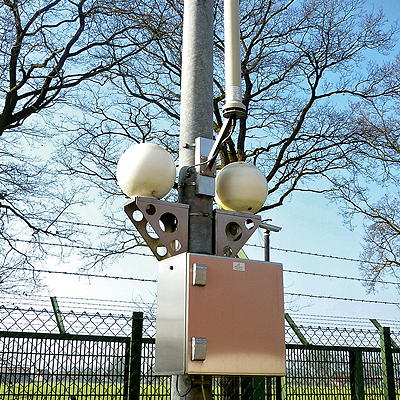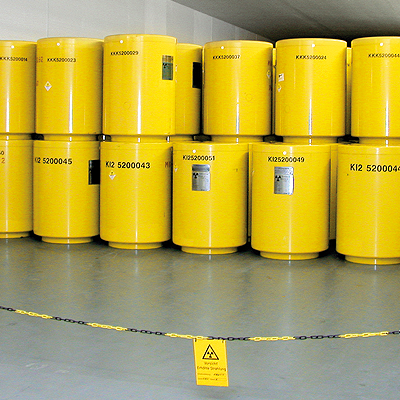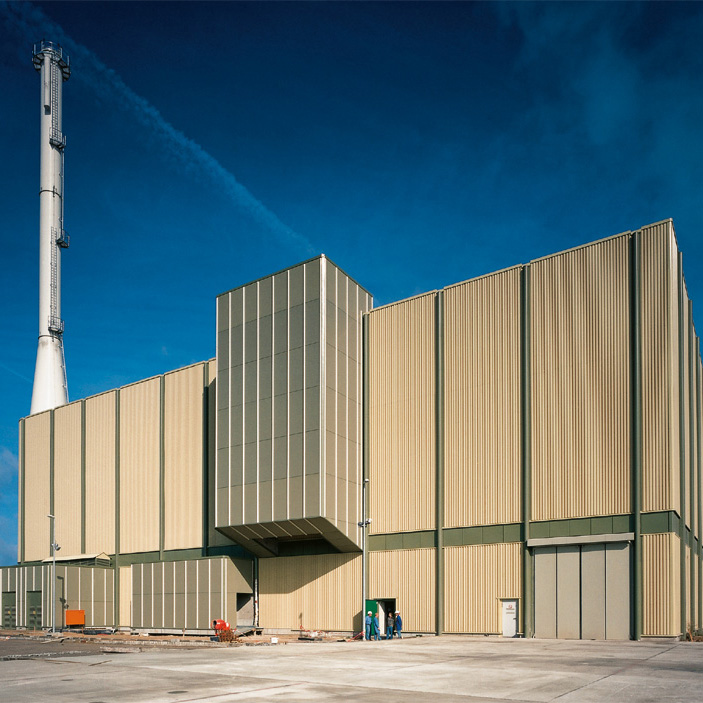Brennelementlager Gorleben GmbH
Lüchower Straße 8
29475 Gorleben / GermanyPhone 05882 10-0
Fax 05882 10-130
Email info@bgz.de
The Gorleben transport cask storage facility (TBL-G)
Five spent fuel elements from nuclear power plants have been in interim storage here since 1995. The TBL-G also has a storage license for vitrified high-level radioactive waste which covers German fuel elements which must be returned from reprocessing in France and the United Kingdom. The first HAW vitrified glass canisters from the reprocessing of German fuel elements in France were transported to the TBL-G in 1996. The last of twelve shipments of 108 casks from France, each with 28 vitrified glass canisters, was made in 2011. 21 casks with high-level radioactive waste from Sellafield and five casks with intermediate-level waste from La Hague were also originally going to be taken to Gorleben; these must now be returned by law to the nuclear power plant interim storage facilities.
The high-level radioactive waste stored in TBL-G continues to generate heat and must therefore cool down over a period of decades before it can be transferred to a repository. The radiation from this waste requires special protective measures. The waste is therefore transported and placed in interim storage in secure CASTOR type casks designed specifically for this purpose. These casks are designed to meet all the necessary protection functions. They prevent radioactive substances escaping into the environment and reduce emissions of the original gamma and neutron radiation to an absolute minimum. Extensive tests have demonstrated that CASTOR casks retain their contents in a securely encapsulated state even in the event of serious accidents. The casks are also continuously monitored for leak tightness during the entire interim storage period. The transport container storage hall is designed to distribute the heat from the containers by means of natural air convection.
The TBL-G covers an area of approximately 5,000 m² and has 420 spaces for transport and storage casks with a licensed total capacity of 3,800 Mg of heavy metal. 113 spaces are currently occupied.
Safety and environmental protection
Strictly defined and extensive measurements have been continually made at the site of the interim storage facility since 1983. As well as the dose rate (“radiation”) permanently monitored around the interim storage site, air samples, precipitation, soil, groundwater and vegetation are also regularly examined for radioactive substances. Evaluations of samples from the surrounding area have not revealed any radioactivity originating from the operation of the interim storage facility. The findings demonstrate that the casks have not produced any activated dust particles of a measurable magnitude. The only findings have been for nuclides originating from the reactor accident in Chernobyl, from above-ground nuclear weapons testing or from natural radioactive substances.
Annual environmental monitoring reports can be downloaded here or obtained in the interim storage facility’s information house.






